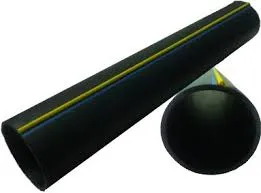Dec . 10, 2024 08:05 Back to list
polyethylene welding rod
The Importance of Polyethylene Welding Rods in Modern Applications
Polyethylene, a versatile plastic used widely in numerous industrial applications, has gained immense popularity due to its durability, chemical resistance, and flexibility. Among the integral components enhancing its usability in construction, manufacturing, and repairs are polyethylene welding rods. This article will delve into the significance of polyethylene welding rods, their applications, and best practices for effective welding.
Understanding Polyethylene Welding Rods
Polyethylene welding rods are specifically designed to be used as filler material during the welding process of polyethylene components. These rods are manufactured from similar or identical grades of polyethylene as the products being welded, which ensures compatibility. Typically, they can be found in various diameters and lengths, depending on the requirements of the specific application. The most common grades of polyethylene used in welding rods include HDPE (High-Density Polyethylene) and LDPE (Low-Density Polyethylene), each offering distinct properties suited for different environments.
Applications of Polyethylene Welding Rods
One of the primary uses of polyethylene welding rods is in the repair and fabrication of polyethylene tanks, pipes, and liners. Industries such as water treatment, agriculture, and petrochemicals frequently rely on these welding rods for creating durable seals and joints. Peering further into its applications, polyethylene welding rods are essential in the manufacturing of custom geometries in plastic parts, where they are used to join two pieces of material or build up worn areas in existing components.
Additionally, polyethylene welding rods are crucial in the construction of geomembranes utilized in landfill projects and water containment systems
. They aid in ensuring that joints remain waterproof and secure, thus preventing leakage and promoting environmental safety. Given their considerable impact, the demand for high-quality polyethylene welding rods continues to grow, especially as industries place greater emphasis on sustainable practices.polyethylene welding rod

Best Practices for Welding with Polyethylene Rods
To achieve optimal results when using polyethylene welding rods, specific best practices should be adhered to. First and foremost, ensuring the cleanliness of both the base material and welding rod is essential. Contaminants such as dirt, dust, or grease can compromise the quality of the weld, leading to potential failures down the line.
Before beginning any welding operation, it is also crucial to select the appropriate welding method. Several techniques can be employed when using polyethylene welding rods, including hot air welding, extrusion welding, and wedge welding. The choice of method will depend on factors such as the thickness of the material and the specific application requirements.
Temperature control is another vital aspect to consider. Polyethylene typically requires careful heat management to ensure that it melts adequately without degrading. Ideally, the welding temperature should be maintained between 260°C and 300°C (500°F to 572°F).
Once the materials are fused, it is essential to allow sufficient cooling time to ensure that the weld joint achieves its intended strength. Post-weld inspections are also recommended to identify any imperfections or areas needing reinforcement.
Conclusion
Polyethylene welding rods represent an indispensable tool in the world of plastic fabrication and repair. Their versatility, combined with the compatibility they offer with various types of polyethylene, makes them an essential component across many industries. As technology evolves and demands for sustainable materials increase, the role and development of polyethylene welding rods will continue to expand, ensuring superior performance in countless applications. Embracing best practices in welding can further enhance their efficacy, reinforcing their significance in modern manufacturing and repair solutions.
-
HDPE Natural Sheet: Durable, Food-Grade & Versatile Plastic Solutions
NewsAug.27,2025
-
Durable Glossy PVC Rigid Sheet | Premium High-Shine Panels
NewsAug.26,2025
-
Durable PP Rigid Sheet: Lightweight, Chemical Resistant Solutions
NewsAug.21,2025
-
PVC Grey Sheet for Extraction: Chemical Resistant & Durable
NewsAug.19,2025
-
Durable PVC Pipe Fittings for Plumbing & Irrigation Needs
NewsAug.18,2025
-
HDPE Steel Belt Reinforced Spiral Corrugated Pipe | High Strength
NewsAug.17,2025

